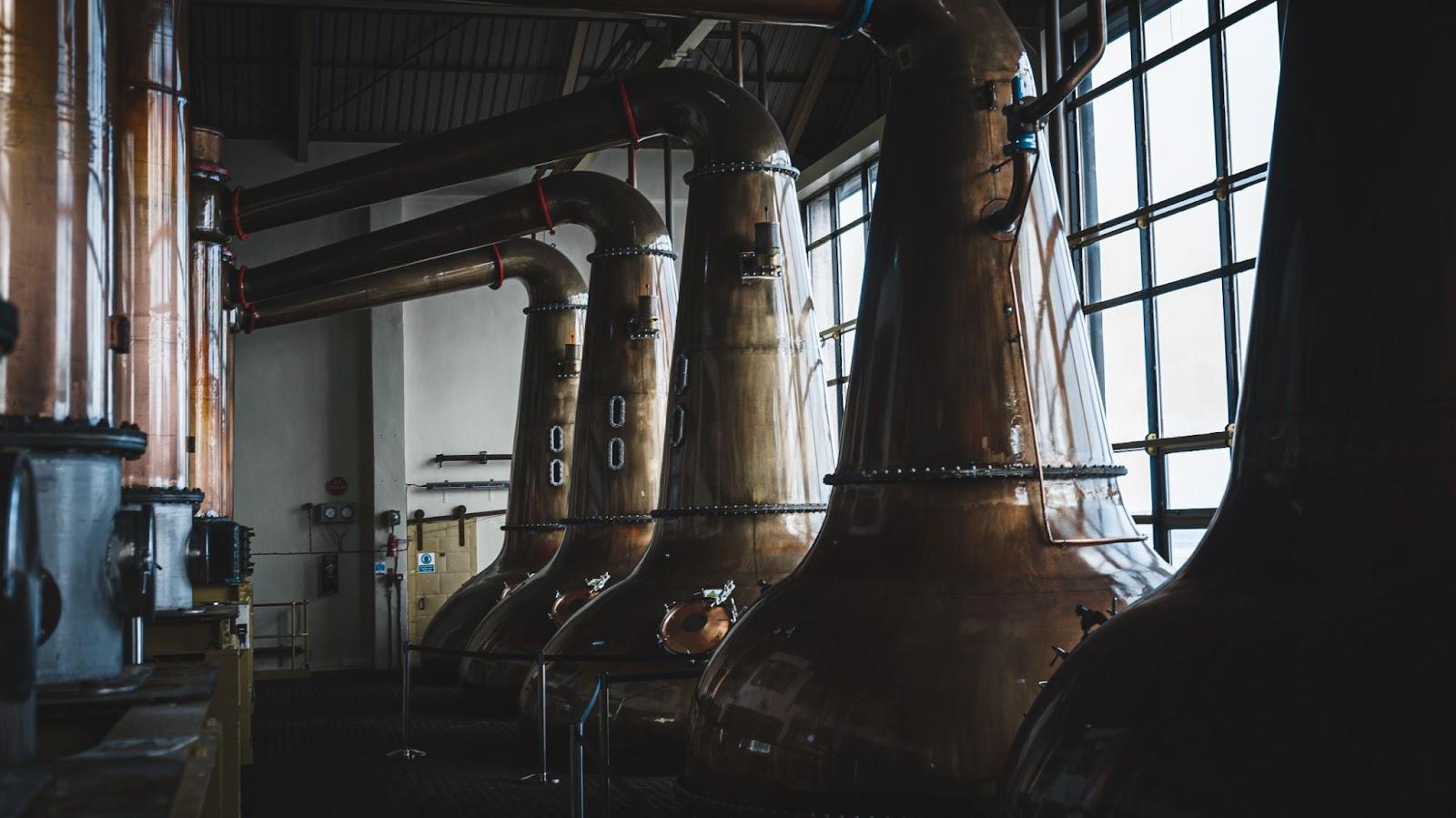- Wine Color/Type
- Top Occasions
- Unique Wines
- Surprise Me!
A Spirited Journey Beyond the Vineyard
When we think of wine, we envision it as our timeless companion through celebrations, dinners, and quiet nights in. Its complexity, terroir, and essence captivate us, whispering stories of distant lands, skilled hands, and nature's expressions. In recent years, some wine lovers have begun exploring other beverages that do not lack complexity.
Not all wine is spiritual. (Photo: JWolf/stock.adobe.com)
Saké: Japan's Legacy
Saké, Japan's pride, is commonly known as "rice wine," a misnomer that hints at its intricate brewing process, which is more similar to beer than to wine. Like wine, it has been savored in ceremonies and celebrations for centuries, deeply rooted in Japanese culture.
Unlike typical fermentation that directly converts sugars into alcohol, saké's production involves a two-step process where koji mold converts rice starch into sugar, which yeast then ferments into alcohol. This method, developed over generations, allows for a wide range of flavors and aromas, from fruity to floral, dry to sweet, capturing the subtlety and depth of Japan's gastronomy.
It offers a spectrum of flavors, from light and crisp to rich and umami-laden, often served in traditional ceremonies or enjoyed casually, reflecting its integral role in Japanese dining and social rituals.
Beer: Not Only for Hipsters
The craft beer movement has redefined beer from a commonplace beverage to a canvas for creativity. This renaissance has resurrected ancient recipes and sparked a new generation of beer lovers and home brewers, some of whom have received international recognition. Its essence lies in its diversity and experimentation, with brewers leveraging various hops, grains, and yeasts to concoct unique brews. American hops are considered more aromatic than European hops.
This resurgence of local and artisanal production, especially in the United States, emphasizes quality and character, offering a counterpoint to the homogeneity of mass-produced beers. Similar to wine, craft beers are as diverse as the brewing scene, ranging from the bitterness of India Pale Ales (IPAs) to the smooth, deep notes of stouts and porters.
Cider: Orchard in a Glass
The fermented essence of apples, and sometimes pears, has quenched thirsts for centuries, from the rustic farmhouses of Ireland to the blossoming orchards of America, proving to be a true crowd-pleaser.
Artisanal cider makers are turning to ancient techniques and heirloom varieties to craft drinks that are as complex as any wine, emphasizing the importance of the apple's origin and variety. Modern ciders range from bone-dry to lusciously sweet and are served in fancy bottles, cans, or kegs in pubs. With a potentially lower alcohol content than wine, it can be enjoyed in larger glasses.
To enjoy mead authentically, you can drink it from a drinking horn. (Photo: Mareen Vandelay/stock.adobe.com)
Mead: The Sweet Viking
Mead, often referred to as the nectar of the gods, is an ancient drink made from fermenting honey with water. Its history spans millennia, rooted in the traditions of Vikings and medieval knights.
The simplicity of mead's ingredients belies the complexity of its flavors, which can be influenced by the variety of honey and adjuncts like fruits and spices. Some producers add apple juice for a more fruit-driven expression. The taste of mead can traverse the spectrum from sweet to dry, infused with the delicate nuances of the honey used, often enriched with the addition of fruits or spices.
Baijiu: The Spirit of China
Baijiu, literally "white (clear) liquor," is the national drink of China, with a history dating back over a thousand years. It is deeply ingrained in Chinese culture, and used in celebrations, business dealings, and family gatherings. Baijiu is so potent, it is often excluded from official statistics, despite being one of the most consumed spirits in the world.
It is produced from various grains, but sorghum is the most common. The grains are fermented in their solid form, using a complex method that allows for a unique, strong flavor. A final distillation results in a potent spirit.
Baijiu is known for its strong, fiery taste and high alcohol content, often described as earthy, with a distinct umami character. It's an acquired taste but one that can open many doors.
Soju: Korea’s Tradition
Soju, a beloved spirit in Korea, has roots reaching back to the 13th century and differs from Baijiu. Traditionally made from rice, modern Soju often incorporates other starches like wheat, barley, or even tapioca. The production process is similar to Baijiu, where the starches are converted into sugar before fermentation, allowing the yeast to metabolize it. Soju has a clean, slightly sweet taste with a gentle warmth, making it highly approachable for pairing with the diverse flavors of Korean cuisine.
Mediterranean Love
Ouzo is synonymous with Greek culture, reflecting the spirit of the Mediterranean. Its history is a blend of ancient winemaking and the art of distillation, evolving into the ouzo we know today in the 19th century. They use distilled alcohol from grapes, to which anise and other botanicals are added. The mixture is then distilled again, ensuring a balanced flavor profile.
It offers an anise-driven flavor, which is both refreshing and invigorating. When mixed with water, it becomes cloudy, a characteristic known as the "ouzo effect". Drinking ouzo offers a visual as well as a sensory delight.
Arak: The Middle Eastern Ancestor of Spirits
Arak is a traditional Middle Eastern spirit, particularly popular in Turkey, Lebanon, Syria, and Jordan and has similarities to Ouzo. It has been part of social and cultural rituals for centuries. It's often aged in clay jars to develop its character. Its flavor profile offers similarities to anise.
Cachaça: Brazil's Sugarcane Delicacy
Cachaça is the heart and soul of Brazil's spirited culture, with a history dating back to the 16th century. It's the key ingredient in the caipirinha, Brazil's national cocktail.
Made exclusively from fresh sugarcane juice, Cachaça is fermented and then distilled. The spirit can then be aged in wooden barrels, acquiring complex flavors from the wood. Cachaça offers a sweet, grassy profile with notes of fruit and spice, especially in aged varieties.
When we are not always in the mood for wine, many other alcoholic beverages are waiting to be discovered. Some are as complex as wine, while others are more simple and brand-driven. However, the key remains in moderation and enjoyment.
Peter Douglas
Latest articles


